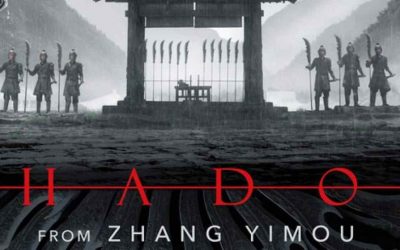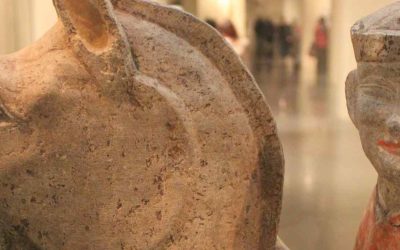Dunhuang in the Silk Road
Dunhuang is a city in the middle of the desert. Over its 2,000-year history, it has always been the last Chinese outpost before reaching the Western Regions—those kingdoms more or less dominated by the imperial regimes, yet showing customs so different from those of the Chinese.
It was part of the empire, but with clear differences.
This has made it a very special city. While it lacks the exoticism of the cities in Xinjiang province, it is far from resembling cities in the rest of China. Its history has been tumultuous; during times when the heart of the country was consumed by endless wars, it served as a refuge for many people seeking peace. It was also, at one point, under Tibetan occupation and later became one of the most important cities in the Western Xia Empire.
In the 20th century, Dunhuang became famous for the discovery of the magnificent Mogao Grottoes and the manuscripts found sealed inside one of them. With their stunning paintings, the grottoes have been called the Sistine Chapel of Buddhist art, but in truth, they are much more than that. More than a dozen of the caves could each be called the Sistine Chapel of Buddhist or Chinese art in their own right.
Mogao Grottoes
People come to Dunhuang mainly to see the grottoes and their frescoes. To protect this treasure and preserve its splendor for future generations, visitors first watch a couple of interesting films at the tourist center, and then take a bus to the grottoes themselves. There, small groups are formed in either English or Chinese, and follow a guide. The guides choose a route of 7 to 10 caves, which they open, explain, and then close again.
The Mogao Grottoes were decorated over many centuries. The oldest caves date back to the Northern Wei Dynasty, while the most recent were created during the Yuan Dynasty—a process that spanned around 1,000 years. In the largest of them, Cave 96, there is a 36-meter-tall statue of Maitreya Buddha. Altogether, the grottoes contain 45,000 square meters of frescoes, as most of the cave walls are fully painted, over 400 temples, and 2,415 sculptures. A truly unique treasure in every sense.
Crescent Lake
A desert experience awaits around Crescent Lake, surrounded by spectacular sand dunes. The large number of visitors, each enjoying their own desert adventure, creates a unique spot where the vast desert meets the energy of modern tourism.
White Horse Pagoda
This is a small pagoda just 12 meters tall, built in the year 384 in honor of the white horse of the monk Kumarajiva, who carried the scriptures that this sage brought to China. Kumarajiva was one of the first translators and Buddhist teachers. He is considered such an extraordinary figure that, according to legend, both in his native Kucha and in China, the emperor forced him to cohabit with several women so that his seed would not be lost.
Xiyun Taoist Temple, built in 1730, is a haven of peace at the back of a beautiful park. Some of its paintings, originally created at the time, are now quite deteriorated. The temple roofs remain notable.
Leiyun Buddhist Temple, though rebuilt in 1989, is vast, with beautifully decorated halls and rooms that attempt to recreate Tang dynasty architecture. At the far back on the left, it includes a small museum of grotto artifacts, including Buddhist scroll paintings that are hard to find elsewhere.
Western Jin Tombs
In reality, there are two tombs: one from 1,900 years ago (Later Han) and the other from 1,700 years ago (Western Xia). Only the entrance bricks are painted. While of interest mostly to specialists, the vast surrounding cemetery—with original modern tombs—makes the visit more broadly appealing. One of the tombs is recreated in the Dunhuang Museum, which should be a must-visit for anyone interested in culture. It mainly contains objects excavated from the tombs and Buddhist artworks.
Surroundings
In the vicinity of Dunhuang, other ancient monuments can still be visited. I usually go to the Yulin Grottoes, with treasures from the Western Xia; the lost city, of which only the walls remain; and the modern sculpture Son of the Earth.
Let us help you plan your visit to Dunhuang—often featured as a highlight in our tailor-made Silk Road itineraries.
About me: I have spent 30 years in China, much of the time traveling and studying this country’s culture. My most popular research focuses on Chinese characters (Chinese Characters: An Easy Learning Method Based on Their Etymology and Evolution), Matriarchy in China (there is a book with this title), and minority cultures (The Naxi of Southwest China). In my travels, I have specialized in Yunnan, Tibet, the Silk Road, and other lesser-known places. Feel free to write to me if you’re planning a trip to China. The agency I collaborate with offers excellent service at an unbeatable price. You’ll find my email below.
Last posts
What are four tigers doing in a Chinese Buddhist Temple?
What are four tigers doing in a Chinese Buddhist Temple? After visiting the Yunnan Provincial Museum, with its exuberance of images of tigers and bulls I strolled around in Guandu Old City. The streets were full of people and I entered the Fading Temple to enjoy the...
Shadow – A Film by Zhang Yimou
Shadow - A Film by Zhang Yimou Zhang Yimou leads one of the most consistent and brilliant careers in the cinematography of China, and with The Shadow (Ying) he delights the viewer again with a beautiful and surprising story, based on a very original script, and that...
The horse in the Chinese horoscope
The horse in the Chinese horoscope The horse is one of the animals of later incorporation into Chinese culture. If, as some scholars say, the system of 12 animals in the Chinese horoscope originated in the peoples who lived in the north, in the steppes and deserts...
The rat in the Chinese horoscope
The rat in the Chinese horoscope The rat for the Chinese is an animal to which are associated some positive and some negative qualities, in fact it is considered capable of carrying out numerous enterprises, not in vain it was the first animal to be assigned a sign of...
An oriental interpretation of dreams
An oriental interpretation of dreams Last week, in a book about the Hani minority in the remote Jinping region, one of the authors devoted part of his article on divination to dream interpretation among the Hani. I translated it, added some comments and published it...
What does it mean to dream of a cow in China? We tell you here
What does it mean to dream of a cow in China? We tell you here In the last few days I have stumbled upon several documents dealing with dreams in China, and some with certain fragments explaining, in particular, the meaning of dreaming about a cow. One of the most...










